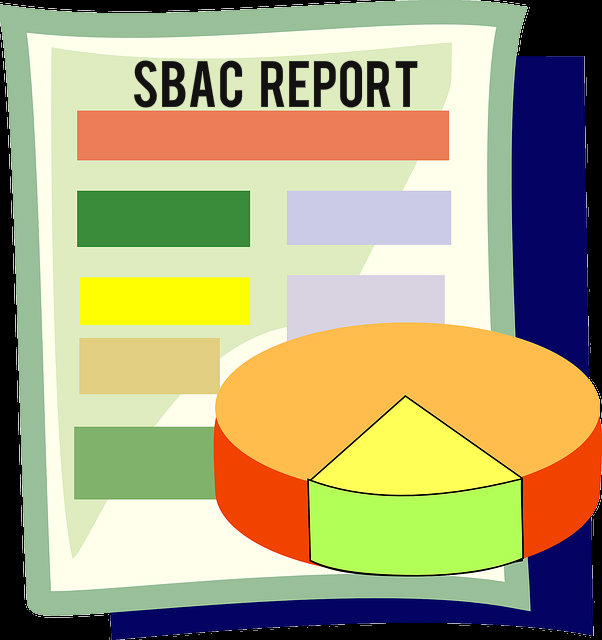2016 Smarter Balanced Assessment Reporting
Author: Rick Phelan
Published: 05.26.16

Over 37,000 students in Sonoma County took the Smarter Balanced Assessment Consortium (SBAC) tests this Spring. The tests measure progress with California State Standards for grades 3 through 8 and 11. The annual state tests are one measure districts, parents, and communities can use to check school achievement. This blog post offers information on 2016 SBAC reports including report elements, types of reports, and timelines for release of information.
Four Report Elements
The 2016 Smarter Balanced Assessment (SBAC) report provides four different information elements for ELA and math.
The first report element summarizes student results into one of four performance levels for English and math:
- Standard Exceeded
- Standard Met
- Standard Nearly Met
- Standard Not Met
The second report element offers scaled scores for ELA and math. SBAC scaled scores allow educators and parents to understand student performance levels in finer detail. The number a student receives shows their current level of achievement on a continuous vertical scale (from approximately 2000 to 3000) that increases across grade levels. Given a grade and subject performance band, one can see how close a student was to the next performance level. If students took the SBAC in 2015, a graph can be used to illustrate student growth over time. A helpful table offering specific scale score ranges by content area and grade can be found at the California Department of Education: Smarter Balanced Scale Score Ranges.
The third report element will highlight student abilities in content claims- key areas specific to ELA and math. ELA results will include information about the students' performance in reading, writing, listening, and research. Reports of mathematics results will include information about student's performance in problem solving & data analysis, using concepts and procedures, and communicating reasoning. A student's performance in these key areas for each subject will be reported using the following three indicators:
- Above Standard
- Near Standard
- Below Standard
A new fourth report is available to districts, schools and teachers. Called a "Target Report," this is a more detailed look at the performance elements in an SBAC claim (the grade-specific knowledge, skill, or ability that students should know or be able to demonstrate within the domain of either ELA or mathematics). Unlike the overall ELA or mathematics score, the Assessment Target Report does not address absolute performance, but rather the report is an indicator of strengths and weaknesses relative to the test performances as a whole of the group one is viewing. Unlike performance levels provided at the content area level, these strengths and weaknesses do not imply proficiency or that a particular content standard has been met. The target report shows how a group of students performed on a target compared to their overall performance on the assessment. More information on SBAC Target Reports can be found here.
Availability of Results
Michelle Center, director of the California Department of Education’s Assessment Development and Administration division, promises 2016 SBAC will be available much more quickly than last year. “We have really made great strides in reducing turnaround time,” Center told the state board at its May meeting. Reports are set to be delivered in different ways to districts, parents and the public.
School District Reports: LEAs/Districts can obtain ‘preliminary’ results starting four weeks after testing is completed through the CAASPP Online Reporting System and the Test Operations Management System. A real-time system, results will change as additional data are received and re-scores are processed. Preliminary reports include:
- Initial Student Test Results
- Partial Aggregate Data
- Partial Assessment Target Reports
- PDF Student Score Reports
- Final Student Data File
Results from this system are incomplete and may not be a good representation of final aggregate results. Caution is warranted in sharing information from this system. Materials documenting use of the CAASPP Online Reporting System are available here. A 30 Second PDF guide for teachers is offered here.
The California Department of Education is in the process of developing new guides for teachers to deepen understanding of the Smarter Balanced Assessment, their alignment with the California Common Core State Standards, and their intended connection to classroom teaching. The guides are available here.
Parent Reports: Student Score Reports will be mailed home to parents in late July/early August. The reports will contain information on individual scores in ELA & math. Results from multiple years will be displayed if a student took the SBAC in 2015. Claim scores will highlight abilities in specific content areas. A sample 2016 student score report is offered here. New materials have been developed to help guide understanding of these materials:
Smarter Balanced Test Score Guide
http://www.testscoreguide.org/ca
Understanding the CAASPP Student Score Reports Web Resources
http://www.cde.ca.gov/ta/tg/ca/caasppssreports.asp
Understanding the CAASPP Student Score Report Video (English)
Entendiendo el Reporte de Puntuación del Estudiante del 2015–16 Video (Spanish)
Public Reporting: Public reports from the 2016 Smarter Balanced Assessment are expected to be released by the California Department of Education by August 15, 2016 at: http://caaspp.cde.ca.gov Users will be able to choose statewide, county, district, and school reports. Filtering in reports will allow users to group data by ethnicity, socioeconomic status, English language fluency, gender and disability status. The public site will also have two new features:
- Change over time report- Examine test results over time (cross-sectional approach) for a given group of students (i.e., 4th graders)
- Test results comparison report- Choose up to three entities for comparisons
Post Assessment Workshop: Connecting Assessments to Instruction
To help districts make the best use of test results, Educational Testing Service (ETS), in partnership with the California Department of Education and WestEd, is offering a series of “Connecting Assessments to Instruction” workshops in various parts of the state. The Sonoma County Office of Education will host a post assessment workshop on June 13 from 1:00 to 4:00 presented by California Department of Education Assessment Fellow, Mary Tribby. Register for this event here.
Blog: Technology for Learners

